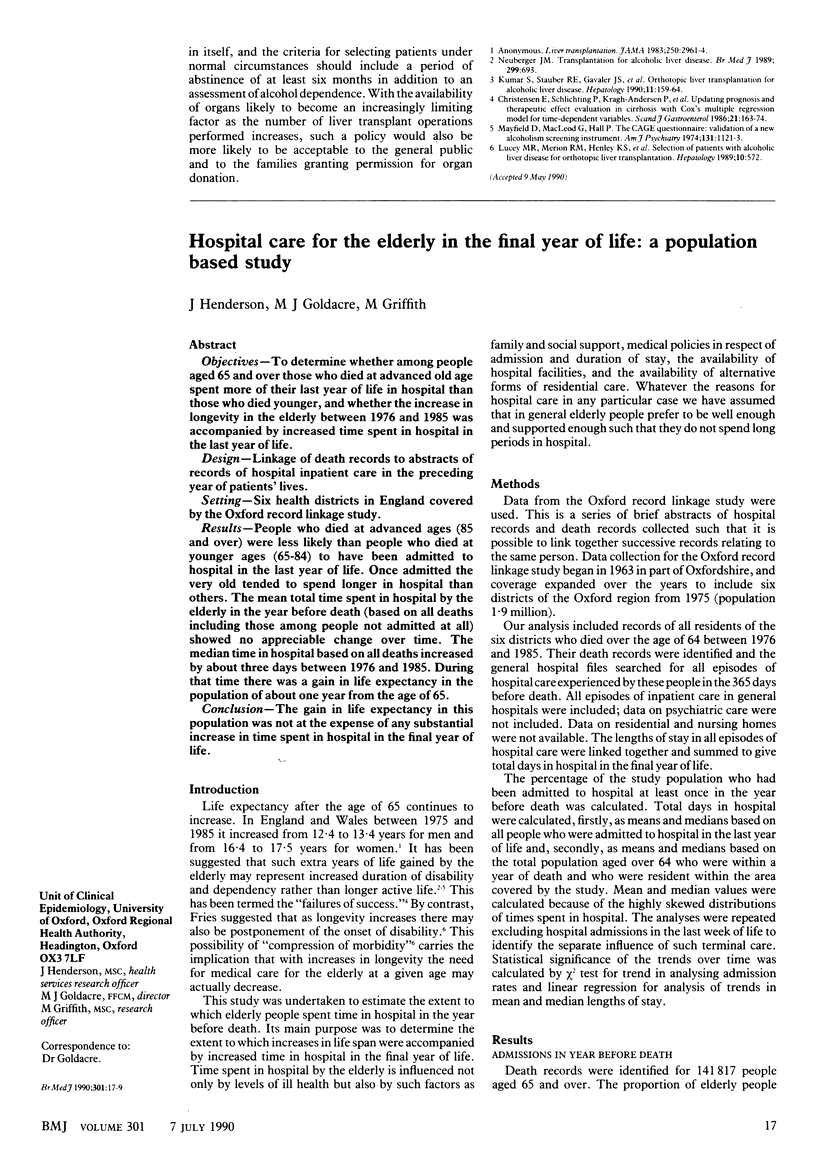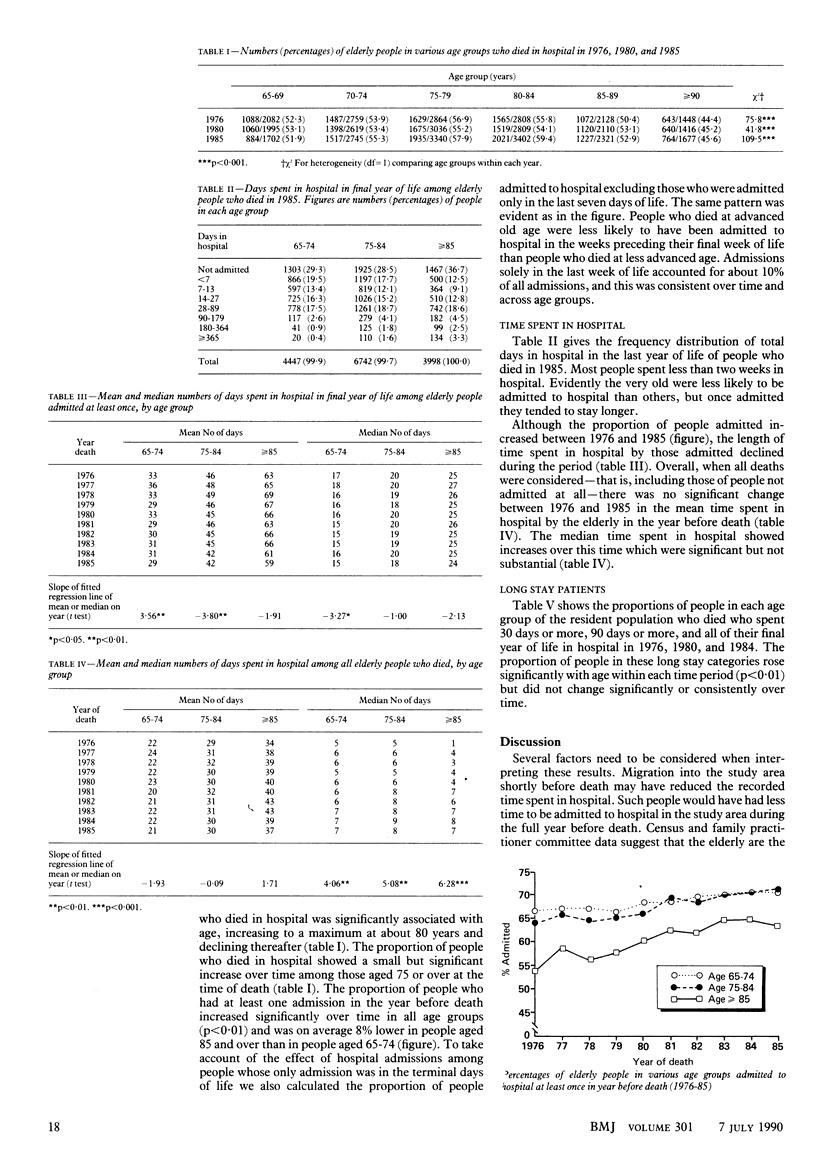Abstract
OBJECTIVES--To determine whether among people aged 65 and over those who died at advanced old age spent more of their last year of life in hospital than those who died younger, and whether the increase in longevity in the elderly between 1976 and 1985 was accompanied by increased time spent in hospital in the last year of life. DESIGN--Linkage of death records to abstracts of records of hospital inpatient care in the preceding year of patients' lives. SETTING--Six health districts in England covered by the Oxford record linkage study. RESULTS--People who died at advanced ages (85 and over) were less likely than people who died at younger ages (65-84) to have been admitted to hospital in the last year of life. Once admitted the very old tended to spend longer in hospital than others. The mean total time spent in hospital by the elderly in the year before death (based on all deaths including those among people not admitted at all) showed no appreciable change over time. The median time in hospital based on all deaths increased by about three days between 1976 and 1985. During that time there was a gain in life expectancy in the population of about one year from the age of 65. CONCLUSION--The gain in life expectancy in this population was not at the expense of any substantial increase in time spent in hospital in the final year of life.
Full text
PDF


Selected References
These references are in PubMed. This may not be the complete list of references from this article.
- Colvez A., Blanchet M. Disability trends in the United States population 1966-76: analysis of reported causes. Am J Public Health. 1981 May;71(5):464–471. doi: 10.2105/ajph.71.5.464. [DOI] [PMC free article] [PubMed] [Google Scholar]
- Fries J. F. Aging, natural death, and the compression of morbidity. N Engl J Med. 1980 Jul 17;303(3):130–135. doi: 10.1056/NEJM198007173030304. [DOI] [PubMed] [Google Scholar]
- Goldacre M. J., Simmons H., Henderson J., Gill L. E. Trends in episode based and person based rates of admission to hospital in the Oxford record linkage study area. Br Med J (Clin Res Ed) 1988 Feb 20;296(6621):583–585. doi: 10.1136/bmj.296.6621.583. [DOI] [PMC free article] [PubMed] [Google Scholar]
- Gruenberg E. M. The failures of success. Milbank Mem Fund Q Health Soc. 1977 Winter;55(1):3–24. [PubMed] [Google Scholar]
- Katz S., Branch L. G., Branson M. H., Papsidero J. A., Beck J. C., Greer D. S. Active life expectancy. N Engl J Med. 1983 Nov 17;309(20):1218–1224. doi: 10.1056/NEJM198311173092005. [DOI] [PubMed] [Google Scholar]
- Stout R. W., Crawford V. Active-life expectancy and terminal dependency: trends in long-term geriatric care over 33 years. Lancet. 1988 Feb 6;1(8580):281–283. doi: 10.1016/s0140-6736(88)90359-5. [DOI] [PubMed] [Google Scholar]
- Wilkins R., Adams O. B. Health expectancy in Canada, late 1970s: demographic, regional, and social dimensions. Am J Public Health. 1983 Sep;73(9):1073–1080. doi: 10.2105/ajph.73.9.1073. [DOI] [PMC free article] [PubMed] [Google Scholar]


